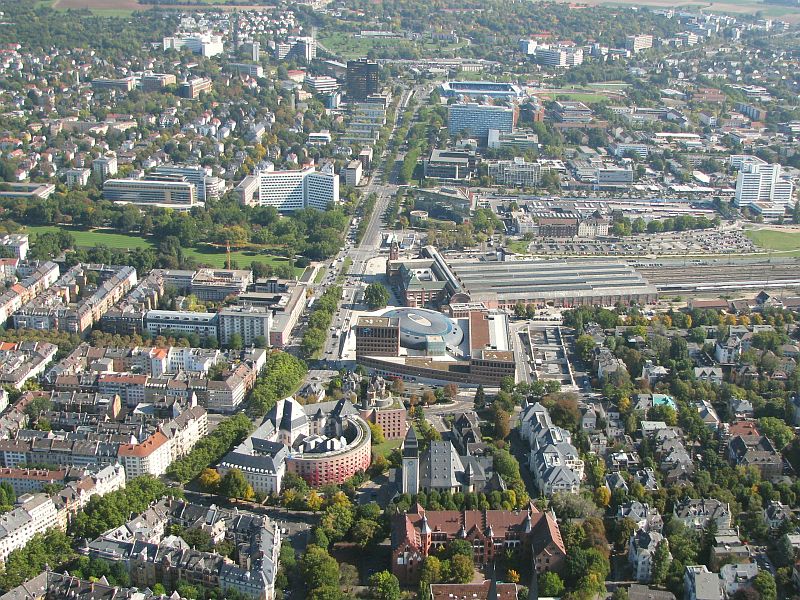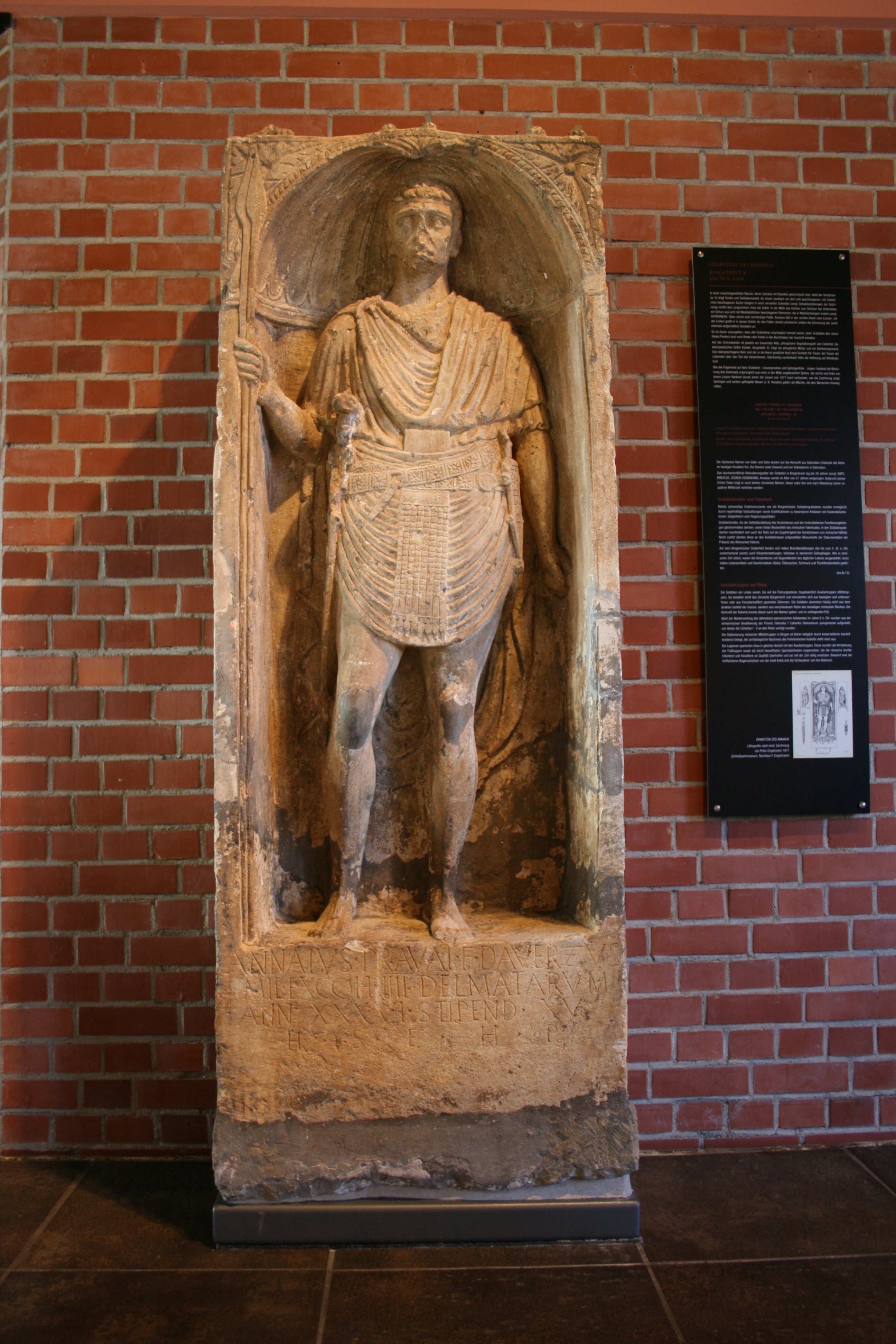|
Rüsselsheim Station
Rüsselsheim station is a transit station in the town of Rüsselsheim in the German state of Hesse on the Main Railway from Mainz Hauptbahnhof, Mainz to Frankfurt (Main) Hauptbahnhof, Frankfurt am Main. It is classified by Deutsche Bahn as a German railway station categories, category 3 station. The station is served by the Rhine-Main S-Bahn and by regional trains. There is another station in Rüsselsheim, Rüsselsheim-Opelwerk station, which is served by S-Bahn trains only. The station was opened in 1863. The Rüsselsheim train disaster occurred near the station on 2 February 1990, killing 17 persons and severely injuring 145. Services Rüsselsheim lies in the area served by the Rhein-Main-Verkehrsverbund (Rhine-Main Transport Association, RMV). It is used by Rhine-Main S-Bahn trains operated by DB Regio and buses. Trains Services on S8 (Rhine-Main S-Bahn), lines S8 and S9 (Rhine-Main S-Bahn), S9 each operate at 30-minute intervals on the Wiesbaden Hauptbahnhof–Hanau Hauptbah ... [...More Info...] [...Related Items...] OR: [Wikipedia] [Google] [Baidu] |
Wiesbaden Hauptbahnhof
Wiesbaden Hauptbahnhof is a railway station for the city of Wiesbaden, the state capital of the German state of Hesse. It is a terminal station at the southern edge of the city centre and is used by more than 40,000 travelers each day, so it is the second largest station in Hesse after Frankfurt Hauptbahnhof. It is classified by Deutsche Bahn as a category 2 station. History The current station replaced three stations in the city centre, which were next to each other near the fairground (''Rhein-Main-Hallen'') and the Wiesbaden Museum. These were: *The Taunusbahnhof (Taunus station), built in 1840 for the Taunus Railway (Wiesbaden– Castel– Höchst– Frankfurt (Taunusbahnhof). *The Rheinbahnhof (Rhine station), built in 1857 for the East Rhine railway (Wiesbaden– Biebrich– Rüdesheim–Niederlahnstein). *The Ludwigsbahnhof ( Ludwig's Railway station), built in 1879 for the Ländches Railway (Wiesbaden-Niedernhausen). A fourth railway line was added in 1889, conn ... [...More Info...] [...Related Items...] OR: [Wikipedia] [Google] [Baidu] |
Railway Stations In Hesse
Rail transport (also known as train transport) is a means of transport that transfers passengers and goods on wheeled vehicles running on rails, which are incorporated in tracks. In contrast to road transport, where the vehicles run on a prepared flat surface, rail vehicles (rolling stock) are directionally guided by the tracks on which they run. Tracks usually consist of steel rails, installed on sleepers (ties) set in ballast, on which the rolling stock, usually fitted with metal wheels, moves. Other variations are also possible, such as "slab track", in which the rails are fastened to a concrete foundation resting on a prepared subsurface. Rolling stock in a rail transport system generally encounters lower frictional resistance than rubber-tyred road vehicles, so passenger and freight cars (carriages and wagons) can be coupled into longer trains. The operation is carried out by a railway company, providing transport between train stations or freight customer facilit ... [...More Info...] [...Related Items...] OR: [Wikipedia] [Google] [Baidu] |
Rhine-Main S-Bahn Stations
The Rhine-Main Metropolitan Region, often simply referred to as Frankfurt Rhine-Main, Frankfurt Rhine-Main area or Rhine-Main area (German: ''Rhein-Main-Gebiet'' or ''Frankfurt/Rhein-Main'', abbreviated FRM), is the second-largest metropolitan region in Germany after Rhine-Ruhr, with a total population exceeding 5.8 million. The metropolitan region is located in the central-western part of Germany, and stretches over parts of three German states: Hesse, Rhineland-Palatinate, and Bavaria. The largest cities in the region are Frankfurt am Main, Wiesbaden, Mainz, Darmstadt, Offenbach, Worms, Hanau, and Aschaffenburg. The polycentric region is named after its core city, Frankfurt, and the two rivers Rhine and Main. The Frankfurt Rhine-Main area is officially designated as a European Metropolitan region by the German Federal Ministry of Transport, Building and Urban Affairs and covers an area of roughly . Subdivisions Although Rhine-Main is considered to be a polycentric metrop ... [...More Info...] [...Related Items...] OR: [Wikipedia] [Google] [Baidu] |
Flörsheim (Main) Station
Flörsheim (Main) station is the station of Flörsheim am Main in the German state of Hesse. It lies on the Taunus Railway, which connects Frankfurt and Wiesbaden. History Florsheim station was opened on 13 April 1840 with the Taunus Railway, which was one of the first railways in Germany and ran between the Free City of Frankfurt and the capital of the Duchy of Nassau, Wiesbaden. Services on line S1 of the Rhine-Main S-Bahn have stopped in Flörsheim since the network started operating in May 1978. Entrance building The core of the Neoclassical entrance building at Florsheim dates back to the construction of the station. It was built in 1839 to a design of the Mainz district architect Ignaz Opfermann, (thesis for Magister Artium; typewritten. Stadtarchiv Mainz: 1991/25 No. 11) but it was altered later. Thus its core forms one of the oldest preserved entrance buildings in Germany. The original building was a functional building with a symmetrical design and a gabled roof, ... [...More Info...] [...Related Items...] OR: [Wikipedia] [Google] [Baidu] |
Bingen Hauptbahnhof
Bingen (Rhein) Hauptbahnhof is a railway station in the Germany, German city of Bingen am Rhein on the West Rhine Railway. It is located in the borough of Bingerbrück. The station that serves central Bingen is called Bingen Stadt railway station, Bingen Stadt. The station is served by InterCityExpress, Intercity (Deutsche Bahn), Intercity and regional trains. It is a junction station where the Nahe Valley Railway branches of the West Rhine Railway (left bank line). It formerly also included a marshalling yard. The station is classified by Deutsche Bahn as a German railway station categories, category 4 station. Location Bingen Hbf is located in the district of Bingerbrück in the city of Bingen am Rhein and extends along the Rhine almost to the Nahe (Rhine), Nahe. Bingen Stadt (town) station is less than 2 kilometres to the southeast. The town station is located in the town's centre and its bus station gives better access to the town's bus services than the Hauptbahnhof. Three o ... [...More Info...] [...Related Items...] OR: [Wikipedia] [Google] [Baidu] |
Idar-Oberstein Station
Idar-Oberstein station serves the town of Idar-Oberstein in the German state of Rhineland-Palatinate. It is on the Nahe Valley Railway (german: Nahetalbahn) and is classified by Deutsche Bahn as a category 4 station. It is regularly served by Regional-Express and Regionalbahn services and in the past it was served by freight traffic. The station is located in the centre of Idar-Oberstein. History Idar-Oberstein station was opened on 15 December 1859 as Oberstein station. At that time the only line ran to Bingen am Rhein. In 1860, the Nahe Valley Railway was completed to the Saarland, making train travel possible to Neunkirchen, where there was a connection to the Palatine Ludwig Railway (''Pfälzische Ludwigsbahn''). Later links were also opened from the Nahe Valley Railway to the Glan Valley Railway (''Glantalbahn''), to Baumholder and the current district of Birkenfeld via the Birkenfeld Railway. Today, the Nahe Valley Railway is one of the main axes of passenger services in ... [...More Info...] [...Related Items...] OR: [Wikipedia] [Google] [Baidu] |
Saarbrücken Hauptbahnhof
Saarbrücken Hauptbahnhof or Saarbrücken Central Station also called ''Eurobahnhof Saarbrucken'', is the principal railway station in the German city of Saarbrücken and the largest station in the Saarland, a German state on the border with France. Around 10 million passengers use the station annually. The station is operated by DB Station&Service as a category 2 station, served by regional and long-distance trains. History Saarbrücken's central station was opened on 16 November 1852 as St Johann-Saarbrücken. The present city of Saarbrücken emerged later from the amalgamation of (old)Saarbrücken, St Johann, Malstatt and St. Arnual. The station was on the Saarbrücken railway, which ran from Bexbach via Neunkirchen (Saar) and Stieringen to the French Eastern Railway. The 56 metre long, 13.50 metre wide sandstone building was between the two tracks with access by an underpass, there being, unusually for that time, no track crossing. As the railway faciliti ... [...More Info...] [...Related Items...] OR: [Wikipedia] [Google] [Baidu] |
Koblenz Hauptbahnhof
Koblenz Hauptbahnhof is a railway station in the city of Koblenz in the German state of Rhineland-Palatinate. It is the focal point of rail transport in the Rhine-Moselle-Lahn area. It is a through station in southern Koblenz built below Fort Großfürst Konstantin and opened in 1902 in the Neustadt (new city), which was built after the demolition of the city walls in 1890. The station replaced two former stations on the Left Rhine railway, which were only 900 m apart, and the former Moselle line station. Koblenz-Stadtmitte station opened in April 2011 in the old centre of Koblenz. Koblenz Hauptbahnhof is on the West Rhine Railway and connects to the Moselle line, the East Rhine Railway and to the Lahntal railway. It is used daily by about 40,000 travelers and visitors. In the station forecourt are a bus station and a pavilion. Since 2002, the station has been part of the Upper Middle Rhine Valley UNESCO World Heritage site. History Rhenish railway station The Bonn-Cologn ... [...More Info...] [...Related Items...] OR: [Wikipedia] [Google] [Baidu] |
Regional-Express
In Germany, Luxembourg and Austria, the Regional-Express (RE, or in Austria: REX) is a type of regional train. It is similar to a semi-fast train, with average speed at about 70–90 km/h (top speed often 160 km/h) as it calls at fewer stations than '' Regionalbahn'' or S-Bahn trains, but stops more often than ''InterCity'' services. Operations The first Regional-Express services were operated by DB Regio, though since the liberalisation of the German rail market (''Bahnreform'') in the 1990s many operators have received franchise rights on lines from the federal states. Some private operators currently operate trains that are similar to a Regional-Express service, but have decided to use their own names for the sake of brand awareness instead. Regional-Express services are carried out with a variety of vehicles such as DMUs (of Class 612), EMUs (of Class 425 or 426) or, most commonly, electric or diesel locomotives with double-deck cars, the latter often wi ... [...More Info...] [...Related Items...] OR: [Wikipedia] [Google] [Baidu] |
Mainz-Kastel Station
Mainz-Kastel station is situated on the Frankfurt–Wiesbaden line (line number 3603; timetable section 645.1) in Mainz-Kastel, now a suburb of Wiesbaden, in the German state of Hesse. It was opened as part of the Taunus Railway, which was opened in 1839/40. The station was opened as part of the last stage of construction of the line to Wiesbaden and was opened on 19 May 1840. Kastel station is also served by the Regionalbahn service running between Neuwied Neuwied () is a town in the north of the German state of Rhineland-Palatinate, capital of the District of Neuwied. Neuwied lies on the east bank of the Rhine, 12 km northwest of Koblenz, on the railway from Frankfurt am Main to Cologne. Th ... and Frankfurt (RB 10) every hour. In the rush hour it extends to a half-hourly service. Buses The following lines of ESWE and MVG serve the station (bus station ''Brückenkopf''): 6, 6A, 9, 28, 54, 55, 56, 57, 68, 91, 99. Notes {{Navbox Rhine-Main S-Bahn Rhine-Main S ... [...More Info...] [...Related Items...] OR: [Wikipedia] [Google] [Baidu] |





_(2).jpg)